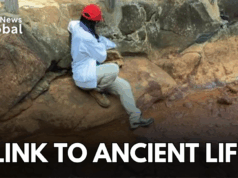In this edition of The Gist – recorded hours before Prime Minister Narendra Modi landed in Washington on a state visit – Dhruva Jaishankar, the Executive Director of ORF America, discusses his latest book, Vishwa Shastra: India And The World.
A 408-page labour of love that traces India’s strategic history from ancient times till now, the book debunks several stereotypical tropes about India’s strategic history along the way. The second section suggests ways and means for a rising India to not just be a part, but to define the new global order.
Here are some key takeaways from the interview:
History And Evolution
- India has been deeply connected with global trade and diplomacy for centuries, from China to the Mediterranean.
- The idea that India lacks strategic culture is misleading—its decisions are deliberate, rooted in history, and adapted to evolving global dynamics.
- While Indian strategy may seem reactive at times, it is shaped by a balance of pragmatism and long-term planning.
Book Structure & Strategic Priorities
- The book is divided into two sections:
- Itihas (History): Explores India’s long-standing international engagements.
- Rashtriya Neeti (Strategy): Examines contemporary geopolitical strategy.
- Europe & Africa are not core strategic priorities, though they remain important for economic and diplomatic reasons.
- India’s main focus areas are its neighbourhood, the Indo-Pacific, and West Asia, reflecting its security and economic interests.
The Global South & India’s Role
- The Global South shares a colonial past, economic challenges, and marginalization in global governance.
- India is positioned as a leading advocate, focusing on:
- Reforming global institutions (UN, WTO, IMF).
- Economic security for developing nations.
- Climate justice, ensuring fair energy transitions.
- India’s growing stature allows it to bridge developed and developing nations, enhancing its diplomatic influence.
Challenge & Opportunity
- Challenge: Managing China’s assertiveness, which affects border security, economy, and regional stability.
- Opportunity: Rise as a global power, requiring a mix of domestic reforms and international alliances to maximize its influence.
On China
- Concerns about China date back decades—George Fernandes labeled it “Enemy No. 1” in the late 1990s.
- Post-1962, India remained cautious, but tensions sharpened post-2013, especially after the 2020 Galwan clash.
- India now actively strengthens defense partnerships, economic resilience, and regional alliances to counterbalance China.
Modi’s US Visit
- Personal rapport with Biden strengthens ties.
- Institutionalizing ties (Quad, 2+2 Dialogue) ensures long-term stability.
- Managing trade & immigration issues, though differences remain.
- Defense & energy cooperation progressing in alignment with “Make in India.”
Friction Points
- Khalistan issue is an irritant, not a deal-breaker.
- Differences on Russia, South Asia, and trade, but manageable if strategic interests align.
In a career spanning three decades and counting, Ramananda (Ram to his friends) has been the foreign editor of The Telegraph, Outlook Magazine and the New Indian Express. He helped set up rediff.com’s editorial operations in San Jose and New York, helmed sify.com, and was the founder editor of India.com.
His work has featured in national and international publications like the Al Jazeera Centre for Studies, Global Times and Ashahi Shimbun. But his one constant over all these years, he says, has been the attempt to understand rising India’s place in the world.
He can rustle up a mean salad, his oil-less pepper chicken is to die for, and all it takes is some beer and rhythm and blues to rock his soul.
Talk to him about foreign and strategic affairs, media, South Asia, China, and of course India.




